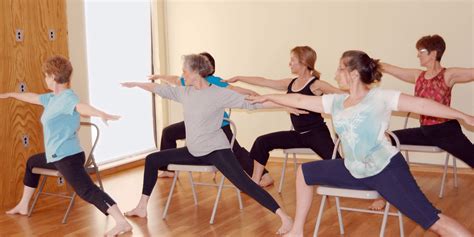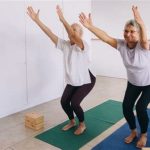Adapting Yoga for Senior Citizens: Effective Modifications and Benefits
Yoga, with its emphasis on physical postures, breathing exercises, and mindfulness, offers numerous health benefits. However, senior citizens often face limitations due to age-related physical changes. In this article, we explore how yoga can be safely modified to meet the specific needs of older adults, providing accessible, enjoyable, and beneficial practices that support longevity and well-being. From gentle adaptations to mobility aids, we’ll provide a comprehensive guide on tailoring yoga for seniors.
Introduction
As people age, maintaining physical health becomes crucial for longevity and quality of life. Yoga, traditionally seen as a practice for flexibility and mindfulness, has become increasingly popular among senior citizens for its mental, emotional, and physical health benefits. However, due to age-related conditions such as arthritis, osteoporosis, or balance issues, standard yoga poses may not be suitable for everyone. This article covers how to adapt yoga practices for seniors, ensuring it remains accessible and safe.
Key Concepts
- Modified Asanas: Yoga poses can be adapted to accommodate mobility restrictions and enhance comfort.
- Chair Yoga: A seated version of yoga, chair yoga, offers support and stability, making poses accessible to those with balance or joint issues.
- Breath Awareness: Pranayama (breath control) techniques can be tailored to improve respiratory function in seniors.
- Mindfulness and Relaxation: Seniors can benefit from yoga’s mindfulness practices to reduce stress and improve mental clarity.
Historical Context
Yoga’s ancient origins in India have evolved to cater to various populations worldwide. Traditionally, yoga was a discipline for mental, spiritual, and physical balance, practiced in its purest form with demanding postures and meditative states. Over time, the practice adapted to different cultures and fitness levels. In the 20th century, modifications emerged to accommodate populations with physical limitations, including the elderly. Today, various schools of yoga focus specifically on aging populations, promoting gentle modifications to poses while maintaining the practice’s benefits.
Current State Analysis
Senior citizens now form a significant demographic of yoga practitioners. However, without proper modification, they risk injury, particularly with poses requiring extensive flexibility, strength, or balance. Tailored yoga classes have become more prevalent, offering customized sequences focused on improving joint mobility, balance, and reducing the risk of falls. Research supports the inclusion of yoga in senior fitness programs, showing improvements in physical and mental health outcomes. Despite this, many yoga teachers and programs do not adequately address the specific needs of seniors, pointing to the importance of accessible yoga education.
Practical Applications
- Use of Props: Blocks, straps, and blankets provide support and can help seniors ease into poses.
- Chair Yoga: Sitting in a chair for poses like seated forward bends or cat-cow eliminates the risk of falls while offering spinal mobility exercises.
- Wall Support: Poses like tree pose or warrior can be performed against a wall to improve balance and stability.
- Slow Transitions: Seniors should focus on slow and deliberate transitions between poses to prevent dizziness or loss of balance.
- Breathing Techniques: Seniors can engage in controlled, deep breathing exercises (pranayama) to enhance lung function and promote relaxation.
Case Studies
Case Study 1: Chair Yoga for Arthritis Relief
An 80-year-old woman with arthritis began practicing chair yoga. Modifications in seated postures, such as seated forward bends and side stretches, alleviated joint pain. Within three months, her mobility improved, and she experienced less stiffness in her knees.
Case Study 2: Fall Prevention Through Yoga
A 72-year-old man with balance issues joined a yoga class for seniors. Over six months, his balance improved significantly, reducing his risk of falls. His program included standing poses with wall support, such as tree pose and warrior II.
Stakeholder Analysis
| Stakeholder | Interest | Needs |
|---|---|---|
| Senior Citizens | Health and well-being | Accessible, safe yoga practices to improve mobility and balance |
| Yoga Instructors | Provide inclusive classes | Training in how to modify poses for seniors |
| Healthcare Providers | Patient health outcomes | Recommendations for safe physical activity for seniors |
Implementation Guidelines
- Training for Instructors: Yoga instructors should receive specialized training to understand seniors’ needs, including how to adapt poses and sequences.
- Health Assessments: Prior to starting yoga, seniors should undergo health assessments to determine appropriate modifications.
- Progressive Approach: Start with gentle, supported poses and progressively increase intensity based on individual ability.
- Safety First: Always use props, chairs, or walls for support when necessary to minimize injury risk.
- Consistent Practice: Encourage seniors to practice regularly, focusing on gradual improvement rather than achieving advanced postures.
Ethical Considerations
When teaching yoga to senior citizens, instructors must prioritize the physical limitations of their students, ensuring a safe and supportive environment. Yoga teachers should avoid pressuring seniors into performing challenging poses and respect their limits. It’s also crucial to consider any underlying medical conditions or injuries that may affect participation. Ethical yoga instruction for seniors revolves around empathy, patience, and individual accommodation.
Limitations and Future Research
While many seniors benefit from modified yoga, there are limitations in terms of accessibility for those with severe mobility issues or chronic pain. Future research could explore the development of more inclusive, highly adaptive yoga practices for seniors with complex health conditions. Additionally, studies examining the long-term effects of senior yoga on cognitive function, chronic illness management, and quality of life would provide valuable insights into its broader impacts.
Expert Commentary
Yoga for senior citizens offers tremendous potential for improving physical, mental, and emotional well-being. However, modifications are key to ensuring it remains a safe practice. Experts agree that the use of props, adaptive poses, and progressive practice can help seniors experience the full benefits of yoga without risking injury. It is also vital for yoga instructors to undergo specialized training, ensuring they are well-equipped to guide senior citizens through a safe and effective yoga practice. Moving forward, the focus should be on making yoga even more inclusive, with research highlighting the unique benefits it offers to aging populations.








